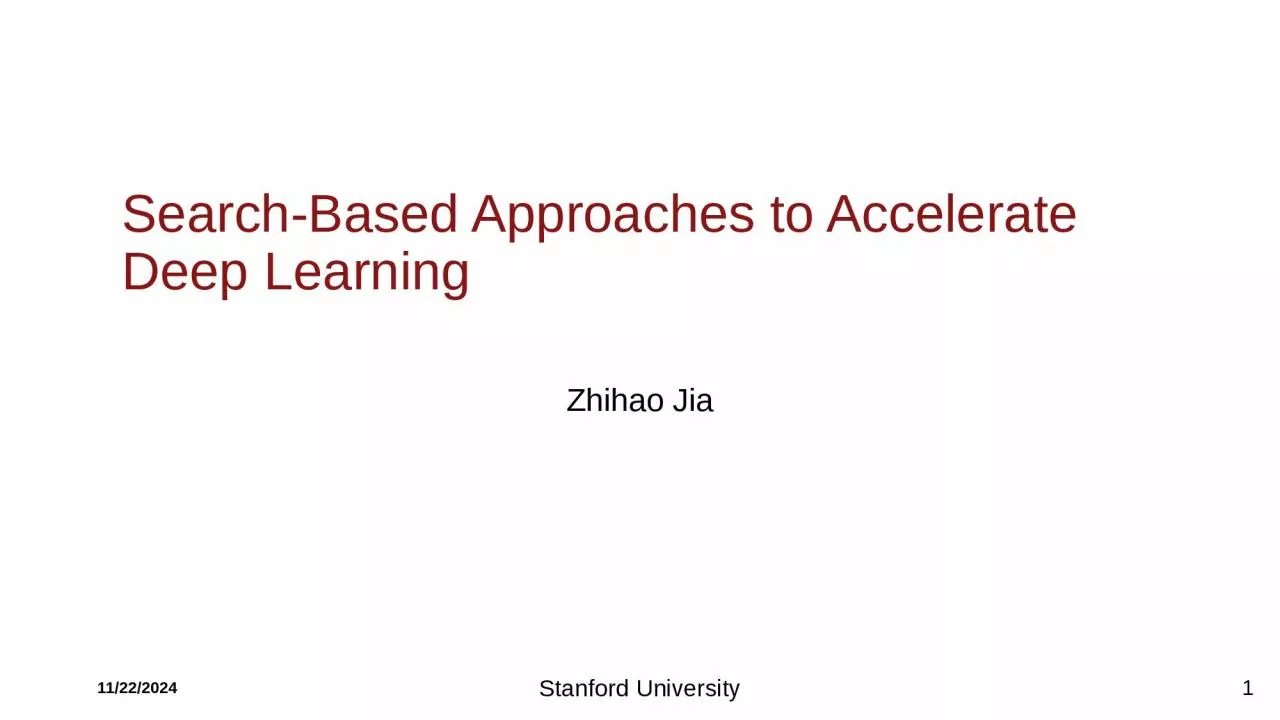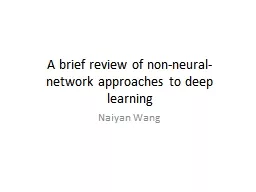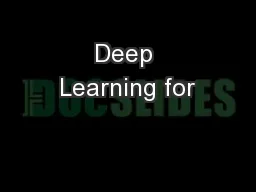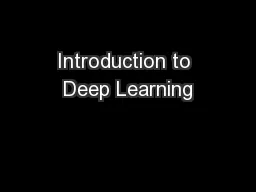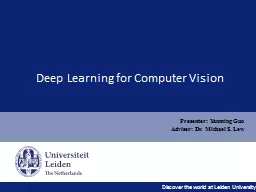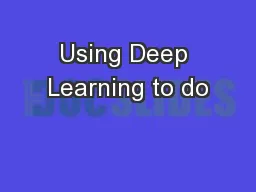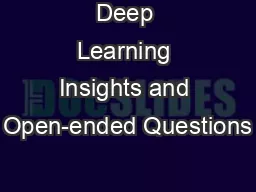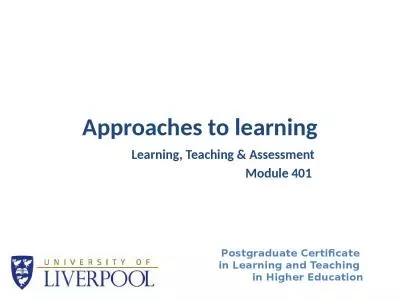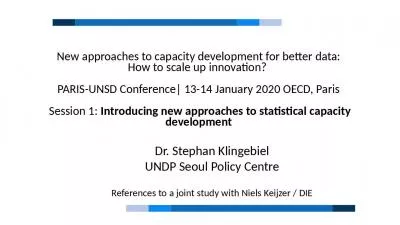PPT-Search-Based Approaches to Accelerate Deep Learning
Author : bikershomemaker | Published Date : 2020-09-22
Zhihao Jia 1 62319 Stanford University Deep Learning is Everywhere 2 Recurrent Neural Networks Convolutional Neural Networks Neural Architecture Search Reinforcement
Presentation Embed Code
Download Presentation
Download Presentation The PPT/PDF document "Search-Based Approaches to Accelerate De..." is the property of its rightful owner. Permission is granted to download and print the materials on this website for personal, non-commercial use only, and to display it on your personal computer provided you do not modify the materials and that you retain all copyright notices contained in the materials. By downloading content from our website, you accept the terms of this agreement.
Search-Based Approaches to Accelerate Deep Learning: Transcript
Download Rules Of Document
"Search-Based Approaches to Accelerate Deep Learning"The content belongs to its owner. You may download and print it for personal use, without modification, and keep all copyright notices. By downloading, you agree to these terms.
Related Documents

